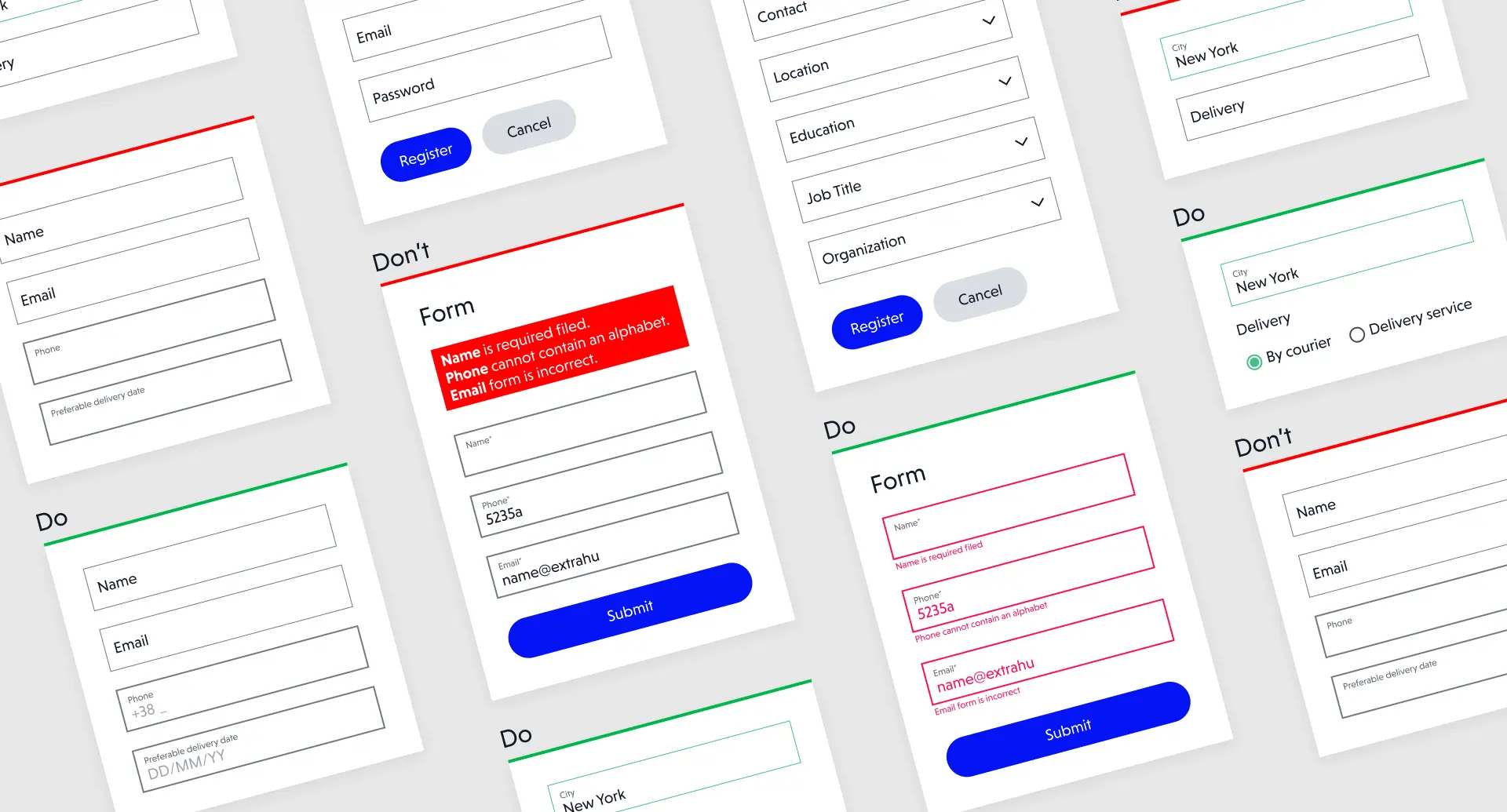Have you ever been in a situation where you selected a customer service chat option and instead of a human advisor, you were approached by a chatbot? Or the other side of the coin - did you intend to get all valuable information about a ticket reservation or software solution through a quick chatbot option, but were redirected to a live agent?
Regardless of the scenario, you may have some preconceived notions about the experience of communicating with a bot and making the most of it. Although chatbot technology has come a long way, from the first bot Eliza in 1966 that was simply meant to parrot human conversation to the technologies of AI virtual assistants like 2011 Siri, that adapts to the user's speech, they still face the same challenge - striving to be user-centric and empathetic virtual agents.
Yet, when interacting with a bot, it's still common to experience impersonal, cold responses or overly emotional, sometimes even prickly reactions.
You're about to find out how to address chatbot social failures from the perspective of UX and get 4 suggestions to make them more social.

Why is the use of chatbots in the social context so important?
Although bots differ in their level of intelligence, design UX should be one of the most important principles when developing dialogue options and internal mechanisms. If the bot is rule-based, the bot's response to various queries is determined by the list and observed keywords. Unfortunately, this type of chatbot cannot answer a query if there is no predetermined answer, which becomes a source of frustration for the user. For AI-based bots, the approach is different. They are also given a set of rules at the beginning, but they are willing to learn from each contact with a customer. In the process, however, social missteps occur time and again.
In the process, however, social missteps occur time and again.
- 46% of users would rather communicate with a live person than a chatbot. (Tidio) Therefore, the need for human-like virtual assistants is growing.
- Chat Bots can cut operational costs by up to 30%. (Chatbots Life)
- With chatbots' ability to manage an unlimited number of interactions at once, they can drastically reduce customer wait times
- Virtual assistants provide a variety of functions - from sending bank transfers to providing weather forecasts to flirting on Tinder.
- They build trust with potential users by giving them credible and accessible access to a service or information.
Faux Pas of chatbots and how to fix them
Even though more and more companies are using chatbots in customer service, this does not guarantee an enhanced customer experience and a satisfactory chatbot UX design.
Tedious or incorrect answers, taking liberties with the users or generating dead-end chats are just some of the unpleasant features of unsocial chatbot designs.
Here are some pointers and best practices for UX designers who want to create better upper-level and empathetic chatbot services.
1. Impersonal Replies
Virtual assistants in this category tend to be incapable of building rapport with the user and most likely and lay bare lack of consideration for the emotional variables. As it is noted in the online Journal Machine Learning with Applications , forty percent (40%) of user requests are more emotional than informative (Xu et al., 2017). With this in mind, you need to consider not only the accuracy of the information provided and the technological aspect of the UX design, but also the empathetic nature of the bot's responses. Repetitive replies such as "I don't understand" or "Please choose one of the options above" will cause irritation to the customer and can make your business seem cold and inconsiderate.
HOW TO FIX:
Employ sentiment detection to better understand your customers. If a user sends multiple messages with exclamation points or signs of anger, the bot should detect this and adjust the response chains accordingly. And on top of that, you should give your chatbot a lively personality - within reason. Of course, it needs to fit your company's image, but varied, more stimulating response options contribute to a more successful user experience. Try more "I feel" statements, addressing the user by name, and moderate emotional responses like "Oh dear, great question," etc. Using human characteristics like names or avatars can also make the virtual agent more approachable.
2. Dead end Conversations
Now is the time for the unceasing oddity for a great deal of chatbots in the market. With alarming frequency, users are met with mechanical "Sorry, I don't understand." Answers scenarios and forced returns of the options menu. This creates frustration, and frustration eventually leads to negative reviews and less inclination for future contact. No one has the time to wade through the menu without finding direction for problem solving. Conversation flow should remain dynamic, but at the same time, jumping back and forth between loops and leaps of logic is a formula for social failure.
HOW TO FIX:
It's up to you to include buttons that should provide precise responses tailored to the user to avoid a dead-end interaction. Try to reframe your fallback messages in unique and creative ways so that even if the user is forced to return to the previous option, it should elicit a gentle smile rather than a long sigh. Have your bot appease the user with the response variant that is within context with the visible option of an external help or number. It can be implemented as a follow-up message after the fallback message. In a system as constrained as a closed bot conversation model, some leeway should still be guaranteed.
3. Overdoing the personal touch
Bombarding users with their personal information and activity logs, not limited to search history, recent trips, or even date of birth, can prove to be not annoying, but disturbing as well. It's jarring when a person knows all these things (and more), let alone when a virtual assistant uses this information without ever asking for it first. If the goal is for users to interact with bots in a natural, genuine way, bots should live up to human expectations of privacy. Yet most chatbot designers try to compensate for the impersonal aspect of bot interaction by going overboard with personalisation.
HOW TO FIX:
Make sure that the bots are not overly explicit and violate privacy so that customers don't feel alarmed or spied upon. This is not rocket science. Have your chatbots ask for permission to use personal information and. They should make it crystal clear in the response flow how the user's data will be handled. Finally, designers should make it easy to access the disabled function for any feature that could compromise the user's privacy. Adjust the priority of the bot to provide useful assistance and practical service, rather than being a conversational toy.
4. Lack of transparency
The final faux pas that is undesirable in a virtual assistant and should be addressed in chatbot UX design is trying to fool users into thinking they are talking to a human and not an artificial AI. Deceiving users by creating the illusion of a human advisor is not fair to customers and can tarnish the overall reputation of the brand. A great many customers find it annoying when they think they are talking to a human advisor, only to find that they are trying to chat with a bot.
HOW TO FIX:
Remove unrealistic standards. If you're using a bot in communication, let people know right away that they're not talking to a human employee. Present them with a working functionality to switch into a real-time conversation. You should be open with the use of chatbots. If you let the user know who they are speaking with, the final UX experience will be significantly more beneficial than if you try to mislead the user with an AI trick.
Tips and Reminders in chatbot UX design
Remember, though, that a chatbot is not the ultimate solution. The customer should be able to get in touch with a real human relatively easily if the chatbot can't help. This is something I learned more as a casual user, not as an UX expert.
I think it's also important that the chatbot quickly verifies if it can help with something or if it should refer the user to a real advisor.
A chatbot is not a miraculous answer to all problems. I'll end the post with the following quote.
“When UX doesn’t consider ALL users, shouldn’t it be known as “SOME User Experience” or… SUX?” — Billy Gregory, Senior Accessibility Engineer




